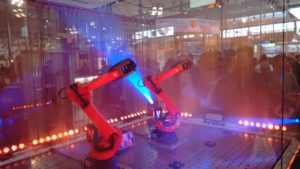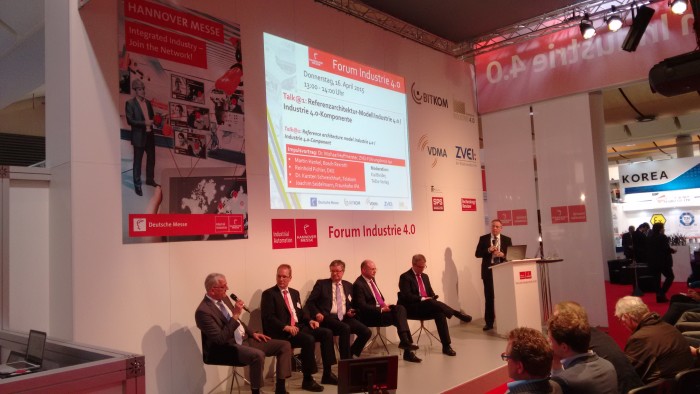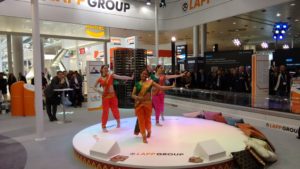Industry 4.0 is a term used in Germany to describe the complete integration of the Automation component supply chain, custom manufacture & assembly, and customer requirements.
This high level of integration may be achieved through the following bedrock of technologies;
- eClass – An online database of components or class types and their properties (e.g. their physical dimensions). This is similar to the abstract class programming concept. Because the database is managed by an independent body, it is easier to get supplier component information quickly, in an agreed format.
- AutomationML – An automation specific XML standard for automation component object oriented data modelling. Both physical attributes and procedural logic may be described. This is necessary to agree the data semantics for the successful exchange of information between systems (e.g. a bill of materials). Continuing with the programming analogy, this is similar to a list of instances of ‘concrete’ classes based on the eClass database. In addition, the classes may be created with methods (commandable actions e.g. Robot.Move()). Even PLCOpen logic can be communicated through AutomationML.
- OPCUA – If there is a requirement for realtime data transfer between systems, then the data model defined using AutomationML may be exposed through OPCUA. Spike is based around OPCUA and uses it to expose a generic type model based on S88 & S95. OPCUA has gained a lot of traction and a number of new key players within the Consumer IT and software industry are getting on board.
The Hal Software stand was based in the smart factory hall 8 beside the industry 4.0 forum and this provided ample opportunity to soak up the current state of the industry trends for the entire week. Internet 4.0 is here, the technologies are now well established and the level of integration that is possible is impressive. Germany showed once again why they are the world leaders in this field. There was a healthy interest in our prototyping software and the big touch screen was particularly popular. On Wednesday, HAL Software CTO Cormac Garvey presented HAL Softwares flagship product Spike in the context of a wider prototyping approach; That of prototyping a batch oriented process control system through the use of established industry design patterns such as ISA-S88 and ISA-S95. There was a lot of interest, not least from established SCADA and control system vendors. Many sectors find control system conceptual design to be problematic; Spike allows engineers to collaborate more easily, and get to the point faster. It makes industrial automation more accessible to the masses, and not just Automation engineering specialists.
Other topics discussed at the Industry 4.0 forum:
Data semantics; Inter system integration is all about Data semantics. It was comforting to see that big Automation companies recognise this challenge and are addressing it. The growth in Germany of the eClass type library to approx 40,000 classes is testament to this fact. Spike V1.0 comes with a generic set of type libraries (approx 40) all exposed through OPCUA to 3rd party OPCUA clients.
Automated engineering workflow was discussed a number of times – HAL Software feel strongly that this area can be improved as the engineering design office is presently largely manual. The concept of virtual prototyping is now gathering momentum within the industry, and this is of course a key use case of Spike V1.0. Spike presently can only export a functional requirements specification but eventually it will enable the creation and export of AutomationML specifications.
A working smart factory, developed with cooperation between Eplan, Phoenix contact and Rittal, was on display.
This smart factory was particularly interesting. Develop the virtual prototype of a control panel in Eplan, utilising object properties from eClass database. Next, export the functionality requirements in AutomationML to the Rittal and Phoenix workcentres. The Rittal workcentre creates the backplane with the required number of pre-drilled holes for subsequent DIN rail component mounting. The Phoenix pick and place robot assembles the dinrail sub assemblies using parts from magazines, and associates an RFID tag with each component subassembly. These are visually checked against the prototype at a later stage and the (human) panel builder uses the RFID tag to ensure all the sub assemblies are mounted in the right place. The result? Automated manufacture of bespoke automation control panels! The only aspect that was still manual was the wiring looms but the working solution has been prototyped and the resulting commercial product will be ready next year.
It was a great example of using virtual prototyping to improve and speed up testing. This is similar to the HAL Software
approach of developing a prototype, then testing the control system against the test prototype utilising a Spike Python test runner OPCUA client.
Cyber Security
There was plenty of interest in the Live hacking at the Industry4.0 forum. (See HAL Software previous article on cyber security at www.automation.com for a more thorough explanation of cyber security basics). Password cracking was illustrated with THC Hydra. The message is; Don’t open up your non-internet technology platforms to the internet! Use only technology that is consistently at the coal face of internet threats and is hardened to protect against same.
Virtualisation for the realtime factory floor – WindRiver private cloud controllers.
Intel Windriver VXworks platform was on display and we took the opportunity to discuss where virtualisation is headed, with the Windriver team; 12 Vms running on a type 1 Windriver hypervisor all running on the same I7 based process automation controller. Their controllers support Windows7 X64 and a number of versions of linux. They enable inter-VM communication through their own proprietary virtual network technology, and with the outside world through ethernet/IP (if your operating system has the associated driver). This is an ideal platform on which to run a soft PLC whose code may have been programmed and tested on a cloud based virtualised development platform. When software is ready, just copy and paste the entire VM into the Windriver controller. Multiple VMs (for eg SCADA, historian , MES etc) can all run on the same controller and can be given the appropriate thread execution priority (i.e. near realtime, non realtime etc). Of course HAL Software don’t do cloud based virtual design development office software…yet.
Elsewhere at the show..
Germany and India
The partner country for this year was India, and the theme was ‘Make in India’. At the HAL Software stand there was particular interest from Indian Engineers in Spike software from an educational and also ‘ease of use’ standpoint. In fact we got more than our fair share of Aerospace professionals from India, as it turns out that we share our name with Hindustan Aeronautics Limited (HAL)! They are slightly bigger of course, with 32,000 employees.

Overall, HAL Software, as exhibitors, found the show very beneficial and we were delighted to represent the growing Irish Industry 4.0 sector and fly the Irish flag. Though we were the only indigenous Irish company exhibiting and presenting at the show this year, the outlook looks positive for Automation technology companies in Ireland and we feel this sector will continue to grow and create more jobs at home.






Comments are closed.